La church of the Assumption of Duratón It is one of the most beautiful examples of the Romanesque art for the Segovia province.
Duraton It is a small town located about 7 kilometers from Sepúlveda, a really interesting town, so it is a good idea to combine a visit to both places in one excursion.
Sepúlveda, furthermore, is justly famous for its lamb roasts.
All the information in detail
How to visit the Duratón church
The temple is located on the outskirts of Duratón, in a solitary place, although it is a few meters from the town and can be reached in a few minutes by crossing the duraton river over a bridge.
This path is now pedestrian, so by car you have to make a small detour.
El duraton river then go through Sepúlveda and other interesting nearby places such as hermitage of San Frutos in the Hoces del Duratón o Fuentidueña, all places that deserve a visit.
It should be remembered that the name Duraton It is of Celtic origin and has the same origin as Duero, the great river which it joins in the vicinity of Peñafiel, already in the Valladolid province.
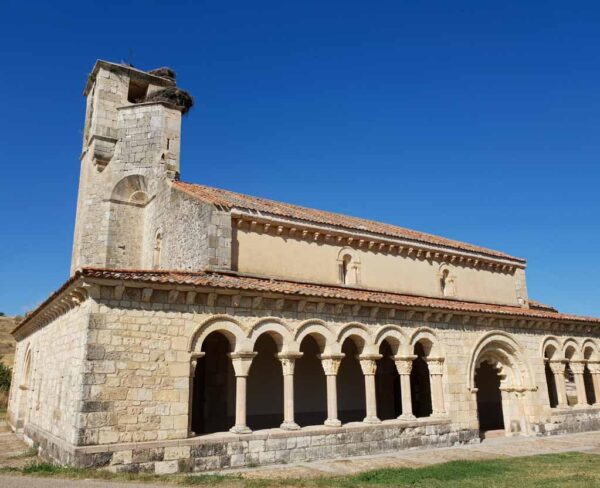
It is always said that the church of the Assumption of Duratón It is one of the most attractive in the province, especially those found in small towns.
Curiosities and history of Duratón church
Although the exact dates of its construction are not known, it can be stated with some certainty that it began to be built, in the head part, at the end of the 12th century.
La porticoed gallery It is slightly later since it is already from the first third of the 13th century, and the most attractive thing about it is the profusion of sculptural details that we find in the capitals of the columns and in the eaves.
What to see when visiting the Duratón church
Everything shines today after an intense restoration that began decades ago, so that the splendor of the complex was restored, both in its architectural and sculptural aspects.
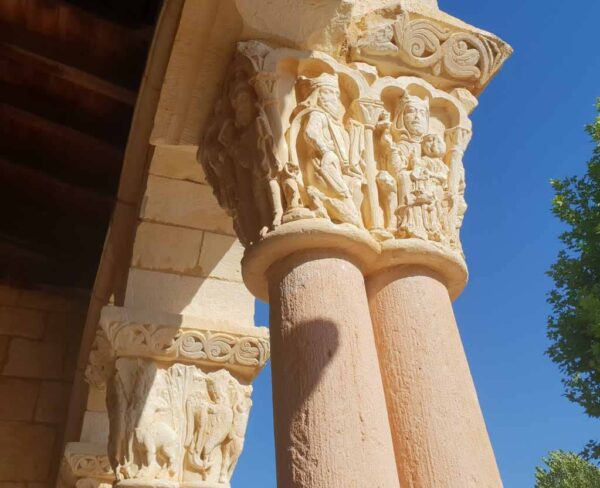
The first thing you see when you arrive is that it is a basilica temple, with a single ship topped by a semicircular header.
Porch of the Duratón church
Along the south and west sides there is a large porch with three doors, which is surely the most attractive part for visitors.
The south side of this porch opens through ten arches, four on one side of the door and six on the other.
The arches rest on capitals with double columns. All but one, which was rebuilt during the last restoration, are splendidly decorated.
As normally happens, the scenes represented on the capitals They have a catechesis function with a strong message: redemption from evil.
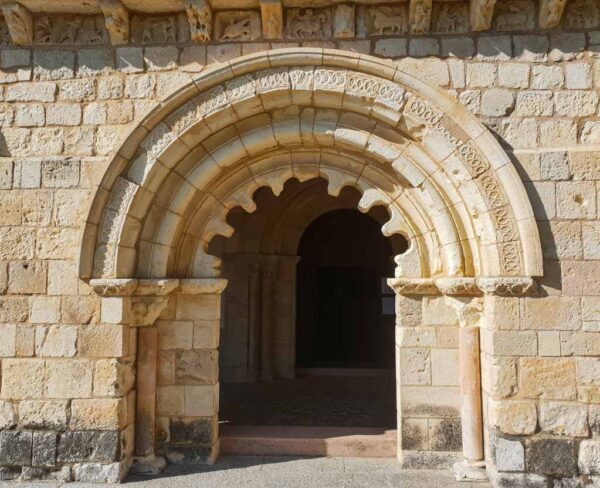
Two of the most elaborate and best preserved capitals are dedicated to the christmas cycle, with representation of Nacimiento and adoration of the Kings.
There are also fantastic, monstrous figures that are symbols of sin.
Birds represent virtue or Eucharist, for example when they appear eating bunches.
Another very interesting part of the church is the cornice decoration that runs over the porch, under the eaves.
The corbels and metopes are highly decorated with images of all kinds. One of the most obvious is that of a dromedary.
ORGANIZE your TRIP
- Don't forget your TRAVEL INSURANCE with a 5% discount
- Book the HOTEL for your trip
- RENT a CAR for your trip
- The best TOURS and EXCURSIONS in Spanish
- NO-LINE TICKETS for museums and monuments
- Best FREE TOURS around the world
- Book your TRANSFER from the airport
- eSIM card with INTERNET at the best price
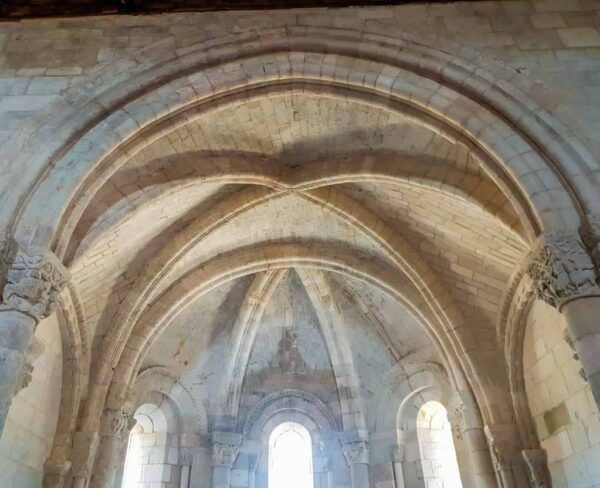
The tower deserves special mention, which is much later, from the 16th century, with some surprising details.
The entire exterior of the church can be visited at any time; only the interior has opening hours.
Interior of the Duratón church
A curious detail is that upon entering, on one side of the nave, there is the main wooden altarpiece which was moved so that the apse with its original shape.
The chancel, divided into apse and presbytery, is accessed through a triumphal arch that separates it from the rest of the nave.
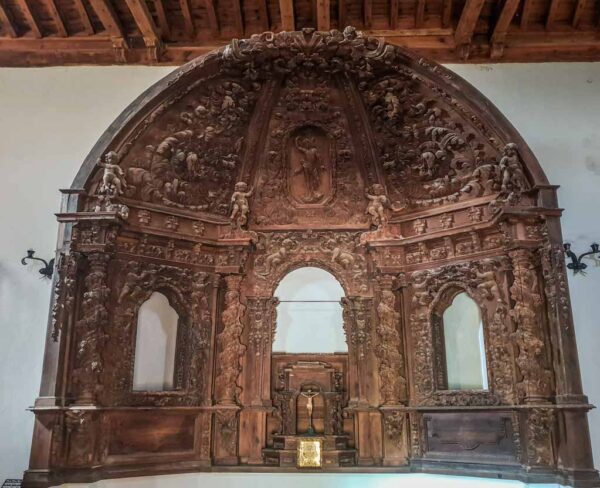
There are notable architectural details, such as the ribbed vault of the presbytery and the columns of the apse that frame three very narrow loophole windows.
The column capitals They show interesting decoration, with fantastic animals, biblical scenes or a duel between knights.
Around the church there are several details that should not be missed.
Tombs from the Visigothic necropolis in the Duratón church
The first thing that catches your attention is a set of graves which we find a few meters from the head.
They are part of a Visigothic necropolis, the most important in the peninsula at the time of the Antiquity late, in the 5th, 6th and 7th centuries.

In many of these tombs, pieces of trousseau have been found that are exhibited in the Segovia musseum.
The absence of weapons in the tombs suggests that there were no major conflicts in the area at that time and it was a peaceful society.
It is interesting to realize that, although we are now faced with a solitary church located a short distance from a small town like Duraton, this area must have been much more inhabited centuries ago.
Remains of the Roman city of Confloentia in Duratón
La Visigothic city to which this necropolis corresponds is the continuation in time of the roman city of Confloentia which, since the 1st century BC, was the most important in this area.
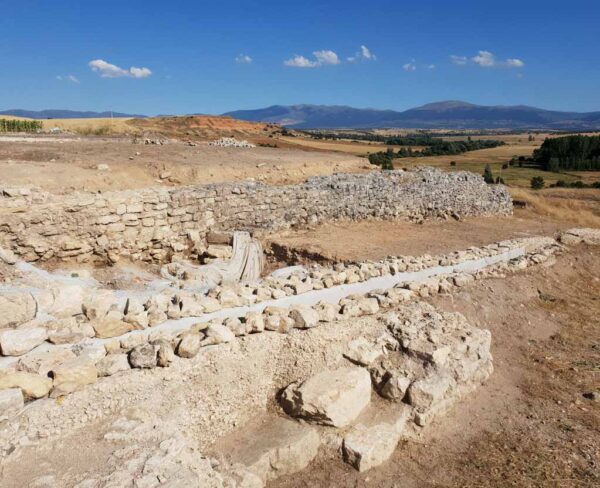
Confloentia would be, along with Segovia, Terms y clunia, one of the focal points of Roman Celtiberia south of the Duero.
A path passes next to the tombs and climbs to the top of the hill at the foot of which the church is located.
It is just a 400-meter walk that takes us to the part of the city of Confloentia that has been excavated.
The layout of some streets that intersect perpendicularly can be perfectly appreciated. The area corresponding to the hot springs has also been excavated.
The area where the church is located would correspond to a part of the outskirts of the Roman city.
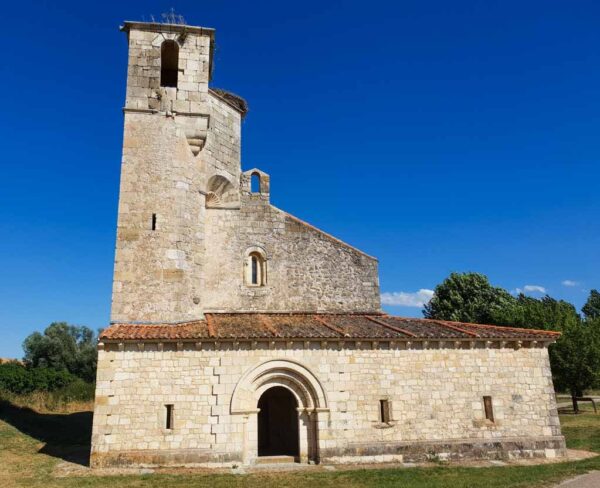
It is possible that the romanesque church that we know today had its origin in a Visigoth temple.
Don't forget your Travel Insurance
Are you organizing your trip or getaway? Don't leave without take out your travel insurance before, and here we explain why. If you hire it with us, you have a 5% discount
After the Visigoth period, the site was abandoned and it seems that it was uninhabited for centuries. There is no information about the area until the 12th century.
Duratón church visit schedules
As already said, the exterior of the church can be seen without problems at any time.
The Visiting hours of the Duratón church in Segovia They are, in summer, every day except Monday, from 11:00 a.m. to 14:00 p.m. and from 17:00 p.m. to 20:00 p.m.
For visits during other times of the year, and more details, you can consult the Sepúlveda Tourism Office, municipality to which Duratón is attached.


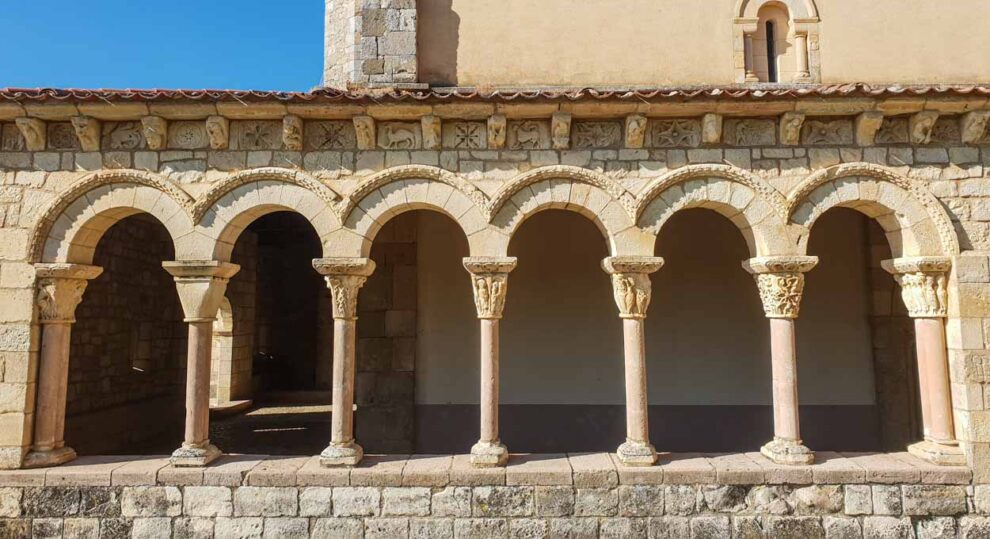
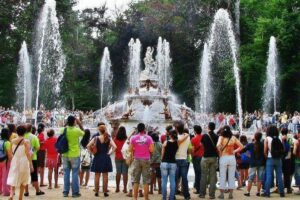
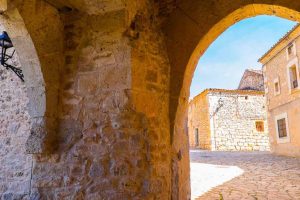
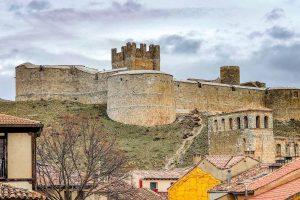











Good morning, I am writing to you from a travel agency in Burgos.
Next September 16, a group that will visit the Sepúlveda area and surroundings, wants to visit their church, around 18,30:19,00 - 17:20 p.m. After visiting it, they want to carry out a brief religious ceremony, since it is a parish in our city, and they bring their parish priest, who will be in charge of directing the event. I know that the visiting hours in summer, in the afternoons, are from 16 to XNUMX p.m., but I don't know if on September XNUMX the visiting hours fall within the summer season. Would it be possible?
I'll be out of the office for a couple of weeks, but I'll read your response when I return. I await your news. A cordial greeting.